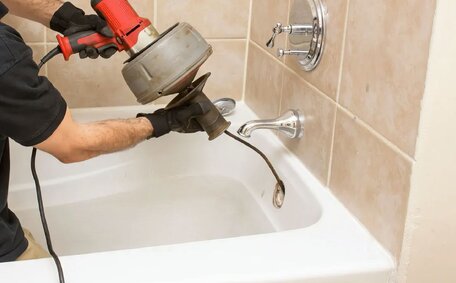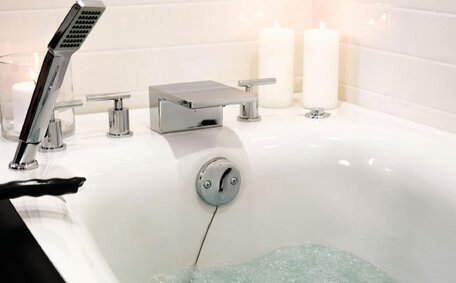Introduction to Gas Fitting Permits and Licensing in Australia
For safety and to meet Australian regulations, professional installation and maintenance of gas appliances and systems is essential. This article outlines the requirements for permits and licensing for gas fitting work, offering guidance for homeowners and tradespeople nationwide.
'Gasfitting’ encompasses activities such as the maintenance, repair, and installation of gas systems.
Common tasks involve the installation and maintenance of gas heaters, stovetops, hot water systems, and various gas appliances, requiring professional expertise across different fuel types such as natural and petroleum gas. With LP gas systems under high pressure and the risk of dangerous leaks or explosions, it’s essential that gas installations comply with strict safety standards and adhere to the Gas Installations Regulations 1999.
Though regulations for gasfitting licensing and permits differ across Australian states and territories, all share key criteria. Knowledge of these requirements, as decreed by safety legislation, ensures legality and safety in gasfitting projects.
Marrickville Plumbing mandates that our tradespeople hold valid gasfitting licences. We maintain compliance through ongoing training and adherence to regulatory changes, ensuring safe, lawful gas fitting services for residential and commercial projects in Sydney.
Who Can Legally Perform Gas Fitting Work in Australia
In Australia, only tradespeople with the requisite licences and permits are legally allowed to undertake gas fitting work. This encompasses the work gas related, such as installation, maintenance, repair or alteration of gas systems, appliances, components, pipes and equipment. Trainees pay only for units essential to their licensing, as each state and territory’s regulatory body is responsible for issuing gas work licences and keeping a record of licensed individuals.
To understand the full process of obtaining a gas work licence, which may require local council approval, refer to detailed guidance on our website. Training encompasses theoretical and practical aspects, with fees based on the units related to specific competencies in gas safety and standards. The licence obtained will correspond with the class of gas work intended.
The main classes of gas fitter licences issued in Australia are:
- Gasfitter (Class I)
- Restricted Gasfitter (Class II)
- LPG Gasfitter (Type A and type b appliance)
In Western Australia, over 7,500 individuals hold gas work licences, and only those listed on the public register are authorised for gasfitting within their licensed skill range.
Obtaining Proper Licenses and Permits for Gas Fitting
Gaining gas fitting licences and permits in Australia involves meeting stringent competency and experience criteria set by state and territory gas regulators.
Eligibility for a building permit depends on completing a qualification course, integral for a gasfitting career. This course provides foundational knowledge and skills, with full fee details available for prospective students.
After lower-level training, possibly subsidised by the Victorian Government, students can review a full fee list covering gas safety, standards, and practical tasks. Completing a logbook with 120 days of supervised work experience is required; for detailed requirements, consult the logbook guidelines.
Overseas applicants should review the full list of requirements for consumer gas installation units to ensure compliance with Australian standards. Evidence must be provided to support your application.
After verifying your training and experience, apply to the gas regulator or your local council to obtain the necessary class of gasfitting licence. Note that fees and licence durations differ by jurisdiction, and you’ll be required to provide supporting documentation.
A gasfitting licence does not grant authority for building work, which often requires a separate planning permit. The licence validates competency, while planning permits ensure job-specific compliance.
By employing qualified gasfitters and obtaining all permits required for building work your gas systems require, Marrickville Plumbing upholds the highest consumer safety and compliance standards when servicing Sydney homes and businesses.
Different Classes of Gas Fitting Licenses
There are several different classes of gas fitting licences available in Australia, authorising specific types of gas work:
- Gasfitter Licence (Class G): Allows gas fitting work on all low and high pressure gas installations. This is the broadest gas fitting licence, encompassing even motor vehicle gas systems.
- Restricted Gasfitter Licence (Class I): Allows work on low pressure gas installations only. This licence has limits on the size and types of gas appliances that can be serviced.
- LPG Gasfitter Licence: Two types are available - Type A for automotive LPG work, and Type B for marine and caravan LPG work only.
Some states may have additional specialty gas fitting licences beyond these main categories. The class of licence determines the exact scope of the varying types of gas fitting work it authorises under law. Course students enrolling fulltime in a gas fitting program can only legally perform tasks aligned to their licensed class.
Gasfitting licences must be renewed regularly, often annually. Requirements like continued professional development apply to maintain competence. Fitting gas appliances outside of your licenced class is an offence under state and territory gas safety regulations.
Applying for a Gas Fitting Permit
To legally perform gas fitting work in Australia, qualified tradespeople must apply for site-specific permits in addition to holding a gas work licence. While permit application procedures may differ across states and territories, they generally involve these steps:
- Confirm you hold the appropriate class of gas fitting licence for the proposed work. Only current licence holders can apply for permits.
- Identify the local gas network operator in the area you will be working, and obtain their technical standards, procedures and application forms that must completed accurately.
- Prepare required documents like site plans, equipment schedules, owner details, and licencing information.
- Complete and submit the permit application to the relevant authority - this will usually be the local gas network operator or, in some cases, permit your state regulator to approve it.
- Pay the permit application fee, which varies by location, with estimates ranging from $180 to $350.
- Wait for the permit to be assessed, allowing up to 20 business days. You may need to provide additional information.
- If approved, receive the permit which is valid for a set time e.g. 12 months. Read it carefully to check authorised work.
- Display the permit onsite and comply with all conditions during gas fitting. Notify authorities if any changes occur.
In the Sydney suburb of Marrickville, as with any area focused on gas electricity consumer safety, gasfitting permits must be obtained through the local gas network operator prior to commencing work. Having qualified, licenced gas fitters and the correct permits is vital for legal compliance and public safety.
Only current licence holders can apply for permits.Maintaining and Renewing Gas Fitting Licenses
To maintain current gas fitting licences in Australia, tradespeople must undertake regular Continuing Professional Development (CPD) activities. This involves undergoing training courses, workshops, seminars or other forms of learning that are crucial parts of staying up-to-date with evolving gasfitting regulations, standards, equipment and procedures.
Annual CPD points requirements vary by state, with NSW stipulating 50 points and Victoria 20 points. Proof of completion, like certificates, must be kept as evidence of satisfying CPD obligations.
When a gas fitting licence is nearing expiry, tradespeople must lodge a renewal application with the appropriate state or territory gas regulator. Renewals typically take place annually or every 1 to 3 years, and the full fee structure can be found by consulting local state regulations. An application form is completed with proof of identity, evidence of CPD, and the full list fee for renewal, which typically ranges from $150-$300.
If CPD requirements have been satisfied, a renewed gas fitting licence will be issued. This allows ongoing authorised work on your property under the holder’s licenced gasfitting class. Failure to renew on time can result in suspension of practise rights until requirements are met.
Keeping gas fitting licences renewed through regular CPD and renewals is a legal requirement. It ensures gasfitters maintain contemporary technical skills to safely service gas appliances and gas systems according to the latest industry regulations.
Inspections and Compliance for Gas Installations
Once a gas installation job is complete, safety inspections are critical for ensuring compliance with regulations. In most states, the work must be inspected by licenced gas inspectors from the local gas network operator.
Safety inspections are performed by a building surveyor to ensure the gasfitting adheres to Australian Standards. Key areas assessed include:
- Gas pipe sizing, routing and connections
- Adequate ventilation for gas appliances
- Secure fixation of appliances and components
- Testing for leaks using approved methods
- Compliance labels affixed to appliances
If any faults or non-compliant work is identified, the tradespeople will be required to rectify them before sign-off can occur. Once the inspection is passed, certificate compliance documents are typically issued to confirm the installation meets all regulatory requirements.
Non-compliant gas work can potentially lead to legal action. For example, in NSW fines up to $120,000 apply for removing compliance labels or performing insufficient leak testing. Compliance inspections are part of a stringent safety regime to protect homeowners and gasfitters alike.
At Marrickville Plumbing, we fully cooperate with inspectors to ensure all our gas installations meet Australian standards. This demonstrates our commitment to delivering safe, high-quality gasfitting services that give our customers peace of mind.
Once a gas installation job is complete, safety inspections are critical for ensuring compliance with regulations.
Safety Standards and Regulations for cross Australia and New Zealand.
All gas fitting efforts, particularly those involving Type B appliances, must comply with this standard, which includes criteria for:
- Safe handling, transportation and storage of gas container cylinders and appliances
- Selection, sizing, layout, ventilation and support of gas pipework and components
- Testing for leaks using approved methods
- Proper commissioning and decommissioning procedures
Additional state regulations detail licencing, training and compliance inspection requirements. Following these standards minimises risks from fire, explosion, gas leaks and other hazards - protecting consumers, gasfitters and the wider community.
At Marrickville Plumbing, we maintain full compliance with all Australian standards and regulations for gasfitting. This ensures we safely deliver the highest quality gas services to homes and businesses.
Penalties for Non-Compliance with Gas Fitting Regulations
Failing to comply with Australian gas fitting regulations when installing new gas appliances can incur serious penalties for both individuals and companies. Licensed gas fitters conducting substandard work also risk prosecution, facing fines of up to AUD 15,000 for faulty installations in Victoria.
For unlicensed work on a gas system, fines up to $20,000 apply in most states. Negligent gas fitting practices endangering lives could lead to criminal charges.
Other penalties for non-compliance include licence suspension or cancellation, mandated training, remedial work orders, and legal action. Additionally, gas utilities can refuse connected gas where regulations are ignored, leaving customers no gas supply. These strict enforcement measures ensure all gas systems are installed safely by qualified professionals adhering to Australian Standards.
At Marrickville Plumbing, we remain vigilant in meeting every compliance requirement to uphold the highest gasfitting standards. Our licensed professionals routinely undergo safety training and adhere strictly to all protocols. This protects our technicians while providing customers with legal, reliable gas services, ensuring optimal building energy efficiency and safety.






